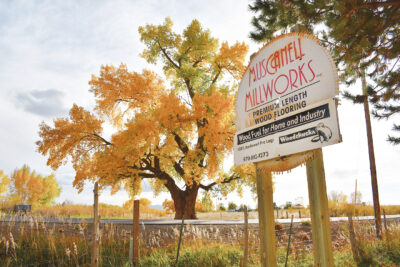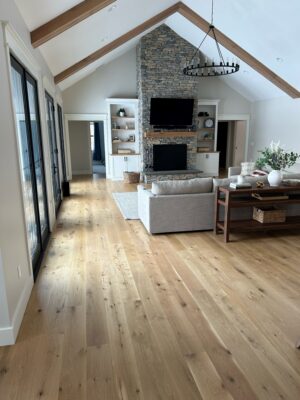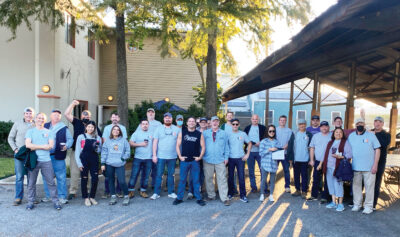With the arrival of summer, sawmills and logging companies were busy processing whitewoods before stain set in. Supplies of Hardwoods were noted as slightly improved, as many reported having low log decks, with continued demand for Hard and Soft Maple and other whitewoods. Sawmill operators noted that orders were ahead of developing production. The focus was still on Hard Maple rather than other species at this time. Some contacts noted that supplies of green Hard Maple had improved although there was a shortage for most other species. With Ontario being in lockdown mode into early June, it was hoped that the inoculation efforts to fight COVID-19 would provide the needed break so the country can move forward and focus on rebuilding the economy.
The strong housing markets in both Canada and the U.S. are encouraging news for those in the Hardwood finished goods sectors, as consumer demand is very strong. Secondary manufacturers state they have large order files, and some have to turn orders away because they cannot meet shipment dates. Kiln-dried inventories are also reported as low overall. The lack of labor throughout the supply stream is also causing some issues in certain areas contacted, thus limiting operations. Prices for most species are reported to be at historically high levels.
Competition for Ash logs is high, due to most area mills not being able to obtain supplies. Availability of this species is also due to the Emerald Ash Borer which has decimated many stands across Canada and the U.S. Demand for kiln-dried stocks on domestic and international markets is good. There is a shortage, however, for most grades and thicknesses, noted wholesalers.
With trends being towards painted finishes and the shortages of higher valued species, Aspen has been used as an alternate, driving increased demand on the marketplace. Even though many wholesalers and sawmills are providing it, supplies are not meeting demand, and prices have increased as well.
Basswood is being processed along with other whitewoods to avoid stain. Demand has picked up, and production is struggling to keep pace with buyers’ needs, causing prices to trend higher. Kiln-dried products are doing well due to new home construction and renovation markets, as well as to limited supplies of higher cost species and so Basswood is used as another alternative. Supplies are limited for the common grades as well.
Log decks for Beech are low as production has been put aside to make room for Hard Maple and Soft Maple. Green lumber supplies are limited and prices are also rising.
Business is very good for quality Birch, but off-color materials require a bit more effort, noted contacts. Demand is also solid for kiln dried Birch.
Secondary manufacturers are alternating between Hard and Soft Maple due to the volatile price cycle for these species. Demand for Soft Maple is strong, and log decks are low. Demand for kiln-dried supplies is strong, but products are insufficient to meet demand, especially for the No. 1 Common and Better grade. Everyone is working to replenish supplies.
Production of Red Oak was limited due to sawmills’ focus on whitewoods, resulting in limited supplies to meet buyers’ needs for most grades and thicknesses, and prices rising. Demand for green Red Oak has been good on domestic and international markets.
Demand for White Oak continues to be strong, and so sawmills are struggling to build their log decks. Competition for good quality logs is intense they note. Shortages of green and kiln-dried No. 2A and Better are the norm with prices escalating.
With the demand being high, and the ability to produce all species lagging this demand, one wonders how long the market can sustain this level of activity, and how high prices will go. Some forecasters report this trend will continue well into 2022.
According to Statistics Canada’s May 12th report, which is the most current data available at the time of this writing, total investment in building construction increased 5.9 percent to $18.6 billion in March, led by the residential sector. On a constant dollar basis (2012=100), investment in building construction was up 5.2 percent to $14.3 billion in March.
Residential construction investment increased for the eleventh consecutive month, up 7.6 percent to $14.0 billion in March. Investment in single units jumped 10.7 percent to $7.8 billion. Quebec led the way with an increase of 30.4 percent, bringing investment in single homes to $1.9 billion for the province. Investment in Ontario was up 9.8 percent to $3.3 billion, driven by renovations to single family homes in the census metropolitan area of Toronto.
Growth in multi-unit construction continued, up 3.9 percent to $6.2 billion. Gains in Quebec and Ontario led the overall increase in this component, as six provinces reported declines. Both new construction and renovations of condominiums and apartments in the cities of Toronto and Montréal accounted for most of the growth.
Non-residential construction investment rose 1.1 percent to $4.6 billion in March, with all components posting slight increases. Despite this gain, the commercial and industrial investment components were below pre-COVID-19 pandemic levels.
Institutional construction investment was up 2.2 percent to $1.2 billion. Multiple high-value projects in Montréal contributed to a 2.6 percent increase in Quebec, where investment totalled $315 million in March. Investments in the province included a new elementary school in Laval and renovations to a secondary school in Montréal. British Columbia recorded another strong month in March, with the continued construction of new schools in Burnaby, North Vancouver and Vancouver.
Commercial building construction rose 0.8 percent to $2.6 billion. Six provinces recorded slight gains, led by Ontario and Alberta. Large office building renovation projects in Edmonton and Calgary contributed to the 1.7 percent gain in Alberta in this component.
Investment in industrial construction edged up 0.4 percent to $823 million as recently as March. Increases in Ontario, British Columbia, Prince Edward Island and Quebec offset six provincial declines.








